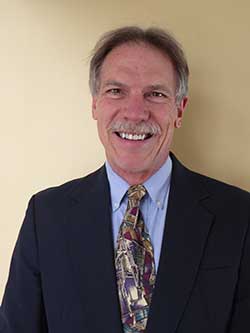Effectiveness of Point of Entry Systems to Remove Select Per- and Poly- fluoroalkyl Substances from Drinking Water
Sponsored by: U.S. EPA Office of Research and Development, Office of Science Policy
Archived: Monday, November 26, 2018
Effectiveness of Point of Entry Systems to Remove Select Per- and Poly- fluoroalkyl Substances from Drinking Water
2018-11-26
U.S. EPA Office of Research and Development, Office of Science Policy
Per- and poly-fluoroalkyl Substances (PFAS) contamination of groundwater sources in the U.S. is a widespread problem for the drinking water industry. Well water supplies in the municipalities of Fountain, Security, and Widefield, Colorado, contain Perfluorooctanoic Acid (PFOA) and Perfluorooctane Sulfonate (PFOS) greater than U.S. Environmental Protection Agency (EPA) health advisory level of 70 nanograms/liter (ng/L). The source of PFAS in the well water has been associated with aqueous film forming foam (AFFF) at Peterson Air Force Base (AFB). Several public water systems and numerous private well owners use the impacted Widefield Aquifer as their sole source of drinking water. To assist property owners and limit exposure of PFAS in residential drinking water systems, treatability studies were conducted by EPA on the PFAS removal effectiveness of commercially available Point-of-Use (POU)/Point-of-Entry (POE) units using Reverse Osmosis (RO) treatment and Granular Activated Carbon (GAC) adsorbents. Household water systems were tested with a representative test water with the water quality characteristics and six PFAS contaminants found in Widefield Aquifer region groundwater samples. The study also documented the ease of use during installation, startup, and continuous/intermittent operation of the water systems.
Accessibility, Recording, and Content Disclaimer
Rehabilitation Act Notice for Reasonable Accommodation
It is EPA's policy to make reasonable accommodation to persons with disabilities wishing to participate in the agency's programs and activities, pursuant to the Rehabilitation Act of 1973, 29 U.S.C. 791. Any request for accommodation should be made to Stephen Dyment at 303-312-7044 or dyment.stephen@epa.gov, preferably one week or more in advance of the webinar, so that EPA will have sufficient time to process the request. EPA would welcome specific recommendations from requestors specifying the nature or type of accommodation needed. Please note that CLU-IN provides both alternate phone call-in options and closed captioning for all webinars, and requests for these specific accommodations are not necessary.
Webinar Recording
By participating in this CLU-IN webinar, you automatically agree to authorize recording of audio and visual content presented during this live event and consent to subsequent use of this recording in the public domain by the U.S. Environmental Protection Agency. This recording may include questions, comments and poll responses provided by you during the live event in addition to your name, voice, image or likeness. This recording will be made available after the conclusion of the live event as part of the CLU-IN webinar archives, and will remain available indefinitely. If you do not wish to consent to the recording, please do not join the live event, and contact Jean Balent at 202-566-0832 or balent.jean@epa.gov to discuss your concerns.
Content Disclaimer
This webinar is intended solely to provide information to the public. The views and opinions expressed as part of this webinar do not necessarily state or reflect those of the U.S. Environmental Protection Agency. It is not intended, nor can it be relied upon, to create any rights enforceable by any party in litigation with the United States, or to endorse the use of products or services provided by specific vendors. With respect to this webinar, neither the United States Government nor any of their employees, makes any warranty, express or implied, including the warranties of merchantability and fitness for a particular purpose, or assumes any legal liability or responsibility for the accuracy, completeness, or usefulness of any information, apparatus, product, or process disclosed, or represents that its use would not infringe privately owned rights.
Presenter:
 Craig Patterson, U.S. EPA Office of Research and Development, National Risk Management Research Laboratory (patterson.craig@epa.gov or 513-487-2805)
Craig Patterson, U.S. EPA Office of Research and Development, National Risk Management Research Laboratory (patterson.craig@epa.gov or 513-487-2805)
Craig Patterson is currently an Environmental Engineer in USEPA's Water Systems Division (WSD) conducting drinking water research studies in Cincinnati, Ohio. Craig's EPA research has focused on small drinking water treatment technologies including filtration, point-of-entry/point-of-use devices, advanced oxidation and disinfection processes. He received his Bachelor of Science in Civil Engineering and Master of Science in Environmental Engineering from the University of Cincinnati. Prior to joining U.S. EPA in 2003, Craig worked as a project engineer for environmental consulting firms for 20 years. He is a professional engineer in the State of Ohio.
Moderator:
 Jean Balent, U.S. EPA Technology Innovation and Field Services Division (balent.jean@epa.gov or 202-566-0832)
Jean Balent, U.S. EPA Technology Innovation and Field Services Division (balent.jean@epa.gov or 202-566-0832)
Ms Balent is on the staff of the EPA's Technology Innovation and Field Services Division where she has worked to collect and disseminate hazardous waste remediation and characterization information since 2003. Ms Balent manages the Clean Up Information Network website and actively supports online communication and collaboration resources available to EPA. She formerly worked with the US Army Corps of Engineers Environmental Engineering Division in the Buffalo District. Ms Balent was also a member of the SUNY-Buffalo Groundwater Research Group where she constructed and tested large scale models of groundwater flow. Ms Balent has also conducted research relating to the Great Lakes, environmental remediation, and brownfields re-development. She holds a Bachelor's degree in environmental engineering from SUNY-Buffalo and a Master's degree in Information Technology from AIU.
Webinar Slides and References:
Webinar Slides and References:
Additional Resources:
- These materials will be available by Monday, November 26, 2018
If you have a suggested topic or idea for a future CLU-IN internet seminar, please contact:
Technology Integration and Information Branch
PH: 202-566-0832 | Email: balent.jean@epa.gov
Technology Integration and Information Branch
PH: 202-566-0875 | Email: adam.michael@epa.gov





